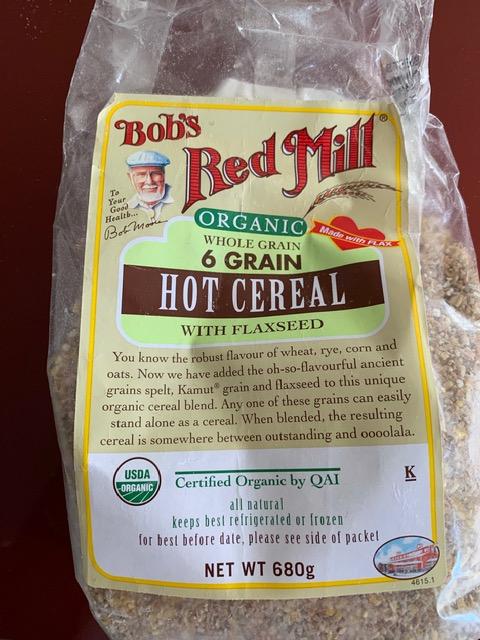Lately I have been concentrating on using up grains and flours stored in my freezer so for the last few weeks I have been making kibbled wheat, kibbled rye loaves. Still some kibbled wheat left but what else is there hiding in there. Ah...
Ok, its been a while since I used that. Starter was refreshed and levain built in two steps overnight and first thing in the morning.
10 am Mix soaker - 157 g 6 grain mix + 39 g barley flakes + 70 g near boiling water. That isn't going to work, too dry. So I gradually added more water until just a little free water left (another 160 g) covered and left.
11:30 am Autolyse 589 g bread flour + 79 g home milled whole wheat + 242 g water + soaker. I added water to the soaker then added to the flours. It was still far too dry so I added another 130 g water. I was working off a recipe I had for a loaf made several years ago but I didn't look up my method or notes. I have done that this morning, and find that I made this as a porridge bread back then and yes I added extra water but nowhere near the amount I added this time. Note to self: update formula in file!
12:30 pm Tip out autolysed dough onto bench, spread 251 g levain (100% hydration) over, dimple in then fold and rollup dough. 100 slap & folds and levain is well mixed in. Add 14 g salt and continue with another 80 slap and folds. At this point I divided the dough and completed another 30 slap and folds on each portion.
4 sets of Coil folds were then done at 45 minute intervals and the dough was left to complete bulk fermentation. I am now leaving BF until it looks about right, puffy and risen. I am not good at judging % increase as the container I am using at the moment is bigger than dough but allows easy access for coil folds.
5:45 pm Preshaped dough and left covered for 30 minutes.
6:15 pm final shaping then left 30 minutes on bench then retarded overnight in fridge.
7 am Unmould dough, score and spritz with water. Baked in preheated DO at 235 deg C for 15 minutes then uncovered and baked another 17 minutes.
Crumb shot

Good but not massive oven spring, crumb is soft - a really good texture for everyday sandwiches, crust is not too thick, all in all I am happy with this bake. Looking back to the earlier bake in May 2018 which was done as a porridge bread, I think the crumb maybe a little better and possibly by using the hot water in the soaker, the effect was probably very similar.
Let us all hope for a better 2021
Bake happy everyone
Leslie